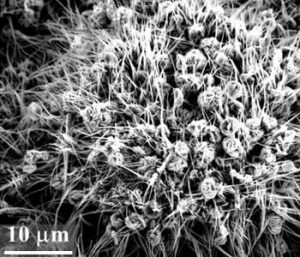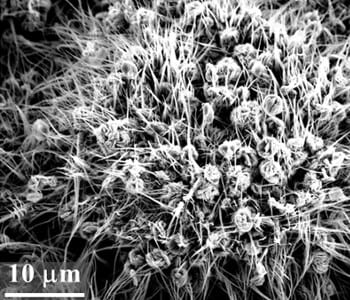 The ability to sustain dropwise condensation for efficient heat transport by vapor-to-liquid phase change is of great interest for thermal management, power generation, and water-harvesting applications. Advancements in nanofabrication techniques allow for the manufacture of superhydrophobic surfaces inspired by those found in nature; artificial structures can be engineered for superior removal of tiny condensed droplets so as to rapidly expose fresh substrate areas for new droplet nucleation.
The ability to sustain dropwise condensation for efficient heat transport by vapor-to-liquid phase change is of great interest for thermal management, power generation, and water-harvesting applications. Advancements in nanofabrication techniques allow for the manufacture of superhydrophobic surfaces inspired by those found in nature; artificial structures can be engineered for superior removal of tiny condensed droplets so as to rapidly expose fresh substrate areas for new droplet nucleation.
In new research, a technique has been developed to fabricate hierarchical micro- and nano-structures that resemble the surfaces of lotus leaves, but are produced on copper substrates for heat transfer applications. The study shows that the hierarchical features, in contrast to homogeneously nano-structured surfaces, can synergistically facilitate condensed-droplet nucleation, growth, and departure processes to enhance dropwise condensation on metallic copper surfaces. The results open up novel and exciting vistas in surface engineering for applications in high-performance and efficient thermal systems.

















